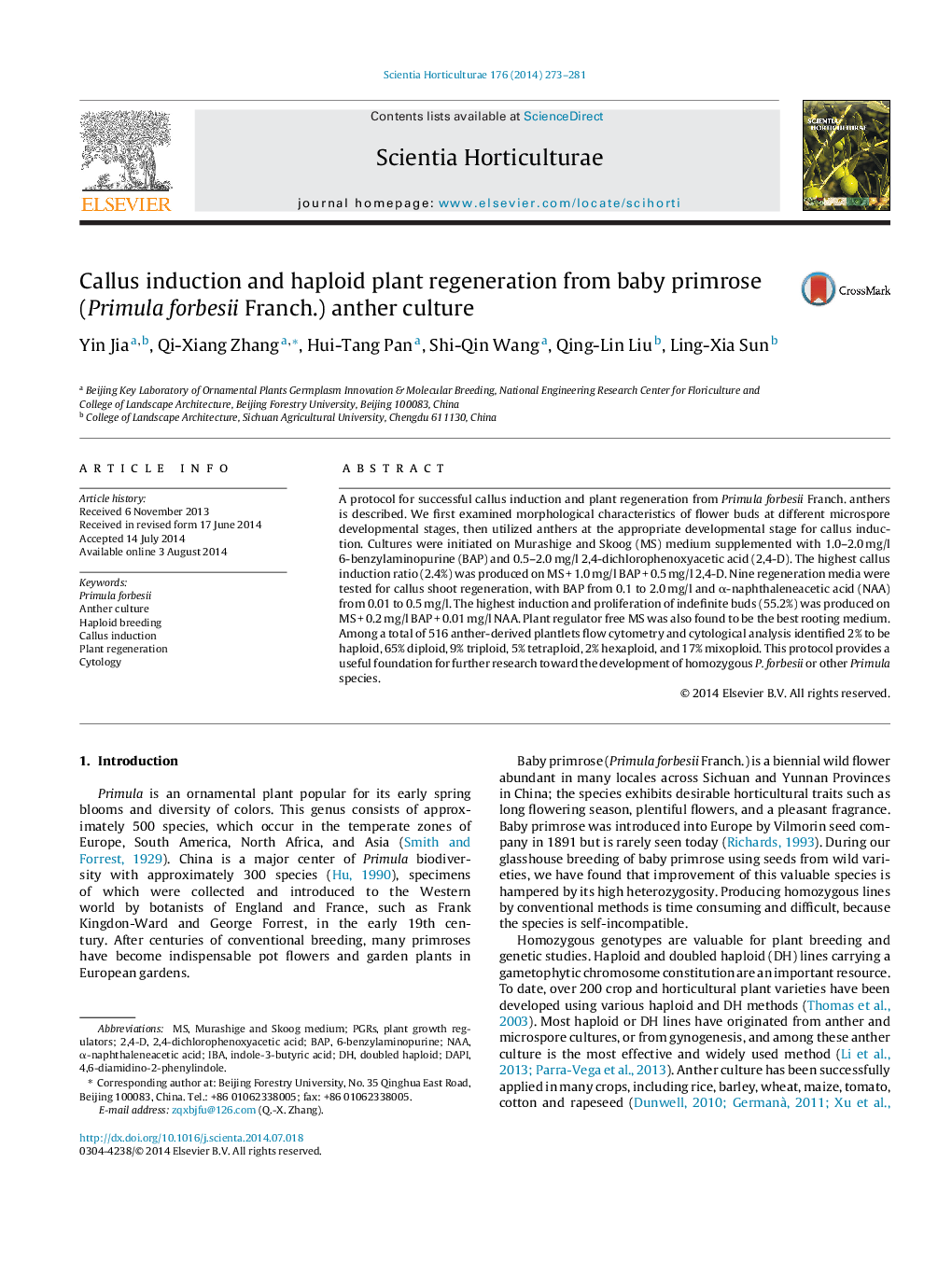| کد مقاله | کد نشریه | سال انتشار | مقاله انگلیسی | نسخه تمام متن |
|---|---|---|---|---|
| 4566764 | 1628822 | 2014 | 9 صفحه PDF | دانلود رایگان |

• A successful protocol for callus induction and plant regeneration from Primula forbesii via anther culture is described.
• We focus on the determination of microspore developmental stages and selection the suitable media formulations in various stages of anther culture.
• 516 plantlets in total derived from anthers demonstrate wide ranges of ploidy.
• This is the first report of the production of haploid plant in Primula.
• This study contributes to the breeding of homozygous primroses.
A protocol for successful callus induction and plant regeneration from Primula forbesii Franch. anthers is described. We first examined morphological characteristics of flower buds at different microspore developmental stages, then utilized anthers at the appropriate developmental stage for callus induction. Cultures were initiated on Murashige and Skoog (MS) medium supplemented with 1.0–2.0 mg/l 6-benzylaminopurine (BAP) and 0.5–2.0 mg/l 2,4-dichlorophenoxyacetic acid (2,4-D). The highest callus induction ratio (2.4%) was produced on MS + 1.0 mg/l BAP + 0.5 mg/l 2,4-D. Nine regeneration media were tested for callus shoot regeneration, with BAP from 0.1 to 2.0 mg/l and α-naphthaleneacetic acid (NAA) from 0.01 to 0.5 mg/l. The highest induction and proliferation of indefinite buds (55.2%) was produced on MS + 0.2 mg/l BAP + 0.01 mg/l NAA. Plant regulator free MS was also found to be the best rooting medium. Among a total of 516 anther-derived plantlets flow cytometry and cytological analysis identified 2% to be haploid, 65% diploid, 9% triploid, 5% tetraploid, 2% hexaploid, and 17% mixoploid. This protocol provides a useful foundation for further research toward the development of homozygous P. forbesii or other Primula species.
Journal: Scientia Horticulturae - Volume 176, 11 September 2014, Pages 273–281